Whether it’s the flexibility a self-drive ski holiday offers, environmental conscience driving you to keep your air-miles down or, like a growing number of campervan and motorhome owners, you are planning to take your own chalet on wheels with you to resort, you should make sure your vehicle is fully prepped to make your journey safely and legally.
Having driven thousands of miles to, from and around European ski resorts, we have learned a thing or two about driving in the mountains in winter conditions.
Season after season, the same questions are raised about winter tyres in the Winterised community. Using our own experience and following interviews with industry experts, we’re bringing you a comprehensive and up to date guide to winter and all-season tyres – what do they do, why you need them and how to get the right ones for you.
The first question we need to answer is “do you need to fit winter tyres to drive your vehicle to a ski resort in winter? Whether you are legally required to have winter tyres fitted to your vehicle differs from country to country. Below you will find a list of the topics we’ll cover in this article and a table of winter tyre regulations in Europe, showing where winter tyres and snow chains are mandatory and any other details you need to know.
Regardless of the law, we firmly believe that all vehicles travelling to, in and around ski resorts in Europe should be fitted with quality winter or all-season tyres with the 3PMSF marking, and here we’ll show you that you call use winter tyres all year round which can save you money, extend the life of your tyres and keep you and your travel companions safer on the road in all cold conditions.
Whether you’re driving your regular road car, a campervan, motorhome or towing a caravan, the information we’ve drawn together here is going to help you make some decisions for your self-drive ski holiday, and give you plenty of pub trivia to bore your travel buddies with on your journey.
We’ll avoid the too-often technical breakdown relating to compounds, performance and the science behind winter tyres, and instead focus on the practical – what this means to you as a driver – but we have also included links to credible sources for those of you who want to delve a little deeper into the highly competitive and secretive world of winter tyres.
If you are looking for information specifically relating to caravans, towing and winter tyres, this article will supplement the information found here.
Answering Your Winter Tyre Questions
Each question is answered here but carry on reading for the bigger picture answer to each question.
What Are Winter Tyres?
Tyres designed for use in cold conditions
How Essential are Winter Tyres for Driving to The Alps?
Essential
How Do Winter Tyres Work?
By magic
Don’t Winter Tyres Just Have Deeper Tread?
No
What is the difference Between M+S and the 3PMSF Tyres?
One’s a tested standard, one means nothing
Do You Only Need Winter Tyres in Countries that have Proper Winters?
No
Are Winter Tyres Only Designed for Snow and Ice?
No
Are Winter Tyres Expensive?
More expensive than summer tyres
What’s the Difference Between Premium and Budget Winter Tyres?
Performance and cost
Do I Need to Put Winter Tyres on All My Wheels?
Yes
Are Winter Tyres Noisy and Uncomfortable for Passengers?
Not unless your car is noisy and uncomfortable
Do Winter Tyres Degrade Faster in Summer?
Yes, a bit
How Long Do Winter Tyres Last?
Longer than you’d think but depends on how you use them
Can I Swap My Tyres onto the Same Rims?
You really shouldn’t do that
How Should I Store My Winter Tyres?
Stacked, covered, dry
Where Can I get Winter Tyres?
Everywhere these days but greater choice online
Do I Need Winter Tyres on My Spare Wheel?
Maybe yes, maybe no.
Why Can’t I find a Tyre That Fits My Vehicle?
Because you’re not looking hard enough or your wheels are really unusual
Do I Need Winter Tyres in Scotland?
In winter, yes
We finish with a few other things worth knowing, some tips you might find useful, and why we think winter tyres all year are the way to go if you’re a snow chaser.
What You Need to Know About Snow Chains and Socks
Have you ever thought about what would happen if you were in a crash in the mountains?
A Few Tips on Maintenance and Safety with Winter Tyres
Conclusion: Being Ever-Ready to Shred
Where in Europe Do I Need Winter Tyres?
| COUNTRY | WINTER TYRES (3PMSF) | SNOW CHAINS | NOTES |
|---|---|---|---|
| Andorra | ❌ | ✅ | Winter tyres are not legally required, but road signs across Andorra indicate when snow chains are compulsory. Minimum tread depth 4mm. |
| Armenia | ❌ | ❌ | Winter tyres are not compulsory but tyres must be appropriate for winter conditions. |
| Austria | ✅ | ✅ | Between 1 November and 15 April, winter tyres are mandatory. The tyres must have a minimum tread depth of 4mm. Road signs across Austria indicate when snow chains are compulsory. |
| Belarus | ✅ | ✅ P | Winter tyres are mandatory. Snow chains are permitted. 1st December to 1st March |
| Belgium | ❌ | ✅ P | |
| Bosnia Herzegovina | ✅ | ✅ | Winter, all-season or snow chains are mandatory. Snow chains and a shovel must be carried. 1st November to 15th April |
| Bulgaria | ✅ R | ✅ | Winter tyres are not legally required, but when travelling between 1 November and 31 March you should bring snow chains as some road signs will indicate compulsory use. |
| Croatia | ✅ | ✅ | Snow chains and a shovel must be carried. Minimum tread depth is 4mm |
| Cyprus | ✅ R | ❌ | |
| Czech Republic | ✅ | ✅ | 1st November to 1st April Minimum tread depth is 4mm |
| Denmark | ✅ R | ✅ P | |
| Estonia | ✅ | ❌ | Winter tyres are a legal requirement between 1 December and 1 March. Extreme weather conditions outside of these dates may extend the period of mandatory winter tyre use. Snow chains are not mandatory. Minimum tread depth is 3mm |
| Finland | ✅ | ❌ | Winter tyres are a legal requirement between 1 December and 31 March. Snow chains are not mandatory. Minimum tread depth is 3mm |
| France | ✅ | ✅ | New legislation means that from the 2020/21 season winter tyres will be mandatory in certain areas of the French Alps. This period is from 1 November to 31 March, with the geographical areas of the ruling to be applied at the discretion of local authorities. At present, snow chains are compulsory in certain areas, as indicated by road signs. |
| Germany | ✅ | ✅ | The use of winter tyres is mandatory on snow or ice-covered roads; it is compulsory that snow chains are fitted to vehicles. As of 1 January 2018, legislation changed meaning that only winter or all-season tyres with the Alpine symbol (snowflake symbol) are accepted. Tyres that just have a M+S code are therefore no longer sufficient to meet German legislation. Germany does not have an exact date when winter tyres must be fitted, but are compulsory based on winter weather conditions. Generally, it’s considered to be October to April. New legislation also mandates that where winter tyres are fitted, all wheels must have winter tyres fitted. |
| Greece | See notes | See notes | Winter tyres are not compulsory but tyres must be appropriate for winter conditions. Snow chains are permitted. |
| Hungary | ❌ | ✅ | Winter tyres are not legally required but carrying snow chains is a legal requirement; if you do not have them your vehicle will not be permitted to travel in Hungary. |
| Iceland | ✅ | ❌ | It is a legal requirement to use winter tyres between 1 November and 14 April. |
| Italy | ✅ | ✅ | Winter tyres are generally not legally required but are recommended. In some areas, road signs may indicate the compulsory use of snow chains or winter tyres. In the Val d’Aosta area, all vehicles must be fitted with winter tyres or snow chains between 15 October and 15 April. |
| Latvia | ✅ | ❌ | Between the 1 December and 1 March the use of winter tyres is a legal requirement. Snow chains are not mandatory. |
| Lithuania | ✅ | ❌ | Between 10 November and 1 April the use of winter tyres is a legal requirement; snow chains are not mandatory |
| Luxembourg | ✅ | ❌ | The use of winter tyres on snow or ice-covered roads is mandatory in Luxembourg; the use of snow chains is not mandatory. |
| Macedonia | ❌ | ✅ | 15th November to 15th March. Minimum tread depth is 5mm |
| Moldova | ✅ | ❌ | 1st December to 1st March |
| Montenegro | ✅ | ❌ | 15th November to 31st March |
| Norway | See notes | See notes | As the driver you are responsible for correctly equipping your vehicle according to the weather conditions. While it is not mandatory, it is the norm and highly recommended to use studded tyres or winter tyres and it it not permitted to use summer tyres on snow and ice. Using studded tyres or snow chains between Easter and October is forbidden, as this can cause damage to the road surface. |
| Poland | ✅ R | ❌ | |
| Portugal | ❌ | ✅ | Winter tyres are not legally required, but road signs indicate when the use of snow chains is compulsory. |
| Romania | See notes | ❌ | Tyres must be appropriate for winter conditions. Minimum tread depth is 2mm |
| Russia | ✅ | ✅ | |
| Serbia | ✅ | ✅ | It is compulsory to use winter tyres when travelling in Serbia during winter; you should also carry snow chains. Minimum tread depth is 4mm. |
| Slovakia | ✅ | ❌ | Winter tyres are not compulsory but tyres carrying the M&S symbol must be used when compacted snow or ice is on the road. |
| Slovenia | ✅ or chains | ✅ | Between 15 November and 15 March it is compulsory to use either winter tyres or snow chains. Road signs will indicate when the use of snow chains is compulsory. |
| Spain | ❌ | ✅ | Winter tyres are not legally required, but road signs will indicate the compulsory use of snow chains. |
| Sweden | ✅ | ✅ R | The use of winter tyres is mandatory between 1 December and 31 March, with one of the following markings ‘M&S’, ‘MS’, M.S’, ‘M+S’, ‘M-s’ or ‘Mud and Snow’. Snow chains are recommended. |
| Switzerland | ❌ | ✅ | Winter tyres are not legally required, but road signs across Switzerland will indicate when the use of snow chains is compulsory. |
| Turkey | ❌ | ✅ | Snow chain use is regionally indicated |
| Ukraine | ❌ | ❌ | |
| United Kingdom | ❌ | ❌ | Winter tyres or snow chains are not legally required, but snow chains are permitted. |
| *R=Recommended *P=Permitted |
What Are Winter Tyres?
Winter tyres are like your snow-boots. They’re designed to keep you from falling into a ditch when you’re walking on snow and ice. Just like winter tyres, your snow boots are very different to your flip-flops. They have all the same features – they’re made of materials designed to perform well in cold conditions; they are constructed in a way that supports you well, even if you’re on a surface with very little traction. The sole is a magic pattern of shapes surrounded by deep and shallow grooves – all with the same objective – to keep you comfortable and pointing the right way up.
Flip flops are no-nonsense footwear that get you from A to B from May to September. You can buy really fancy ones that are very comfortable and made off all sorts of high-tech materials, or you can buy very basic cheap ones that won’t last but do the job fine for a while.
It doesn’t matter how much you spend on your flip-flops, they will not stop you falling on your face in the snow, but perhaps even more important – they’re pretty useless as footwear in the cold too.
A Brief History of Winter Tyres
Pneumatic tyres (the ones with air in as opposed to the ones made famous by the Flintstones) have been around for about 130 years. Winter tyres started to emerge in the late 1930’s with Finland leading the way – motivated by assuring haulage could continue through winter months, transporting much needed supplies to the far north.
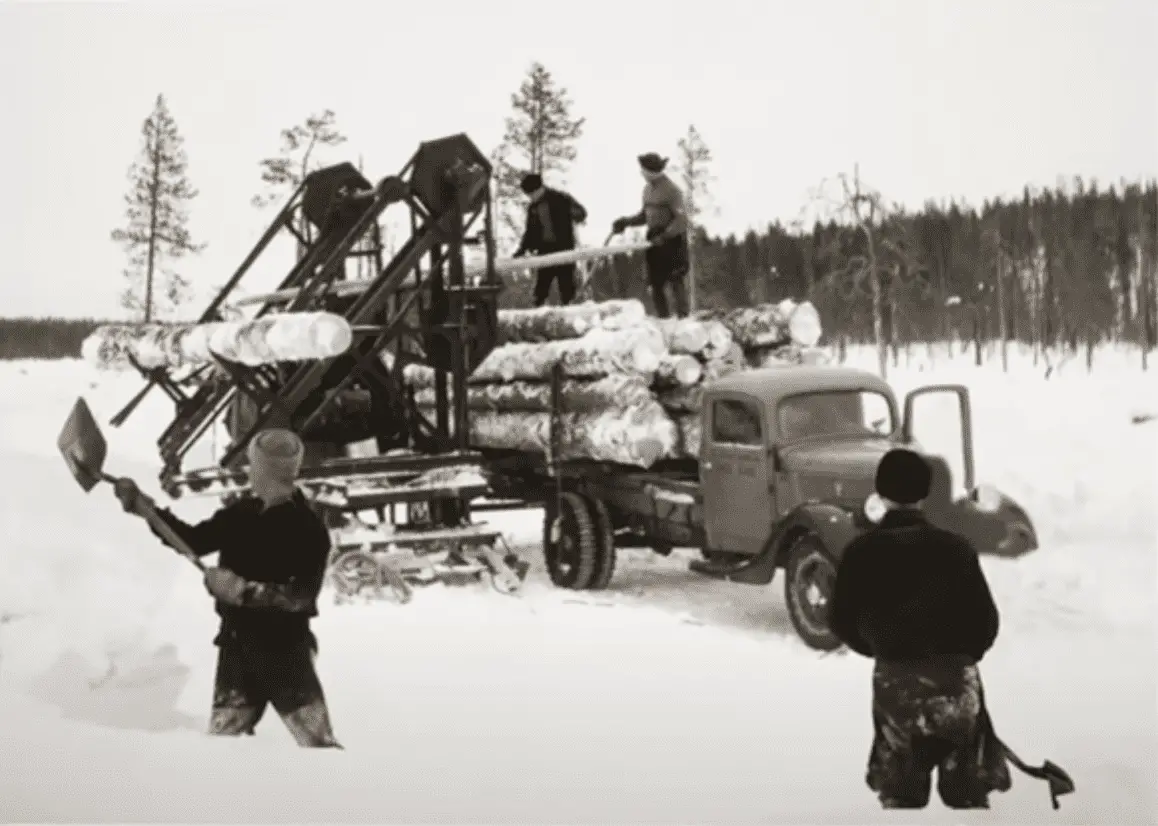
Roll forward 80 years and most sensible nations that experience a winter where temperatures sit below 10oC from October to March, mandate the use of winter tyres to some extent.
However, despite the economics and science (we’ll look at that later on) firmly pointing in favour of winter tyres – not just for winter use but year round – and the undisputed safety gains of tyres designed for use in cold weather, we still have tables like the one we’ve produced above that show different rules from one mountain to the next. Confusing right? We’ll simplify it for you – you do need winter tyres.
Acknowledging the increasing market for winter tyres and the opportunities that presents, most tyre manufacturers have invested in winter tyre technology and they are widely available at budget, mid-level and premium price points for all passenger cars, commercial vehicles and leisure vehicles. You can even buy winter tyres specifically for electric vehicles, SUVs and 4x4s (favoured by a lot of you driving to the Alps) – so you have no excuse to be flying up mountains in search of fresh powder in your flip flops.
What About All-Season Tyres?
In the last few years we have seen a sudden mounting investment from the main players in ‘all-season’ tyres and a lot of marketing hype.
A market that was created by Goodyear in the 80’s, the all-season tyre is gaining traction (pun intended) and has been monopolised in the motorhome sector by Michelin with their award-winning Cross-Climate range of all-season tyres.
There are a growing number of really good all-season tyres available for all wheel sizes and vehicle types and this is likely to be the tyre of choice for many of you who just visit the mountains once or twice a year as long as it is equipped with the 3PMSF marking. You’ll see here how despite popular belief, both winter tyres and all-season tyres can be used year round and they have a lot of benefits to summer tyres.
For frequent travellers to snowy climes, the full winter tyre is still strongly recommended for its increased performance and longevity in these conditions and is still our tyre of choice year round living in Oxfordshire.
What we’ve learned: Flip flops are useless in the snow.
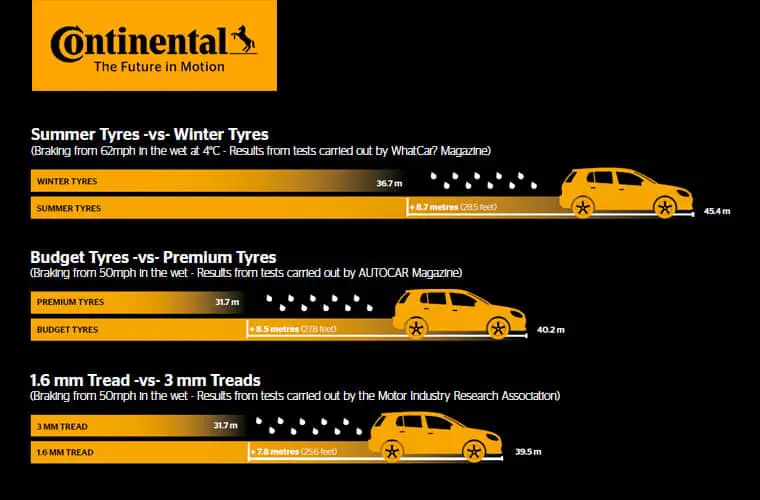
How Essential are Winter Tyres for Driving to The Alps?
Critical. Forget the laws. You’d be crazy not to fit winter or all-season tyres to your vehicle if you are driving to the mountains. We hear arguments ALL THE TIME from people who’ve been driving in the mountains for decades on summer tyres in the ski season and have never had an issue or been in a jam. They claim their excellent driving skills and a set of shonky old snow chains have not let them down yet.
Bully for them. They are the chosen ones – protected by the mountain gods because they clearly have extremely important work to do here on earth – far too important to be falling off a cliff and taking a bus load of unwitting tourists with them to an icy grave.
Seatbelts didn’t used to be mandatory either, but thanks to advancing technology, investigative science, and a bucket load of irrefutable data, seatbelts are pretty much mandatory car-wear all over the world with few exceptions. However there is always one complete idiot who won’t wear one, quotes pseudo-science to justify their decision and is fairly likely to end up face-first in a lamp-post at some point in their driving career.
You have objections – we know that, and we’ll deal with them one by one in this article – cost, storage, you only drive in the snow once a year really, you have a 4×4…. Stick with us and hopefully we can convert you.
How Do Winter Tyres Work?
In order to answer this question we need to go back to basics and talk about how any tyre works. Don’t skip this bit, it’s important.
Despite popular believe, tyres are not an ‘accessory’. They are a fundamental part of the vehicle ecosystem and are far more important to your comfort, safety and the economy of your car than your funky multi-media system and integrated shiatsu massage chair; the 481 air bags secreted in every nook and cranny of the cabin; or the premium fuel your thirsty road beast drinks for breakfast, lunch and dinner.
Tyres are part of the suspension of your vehicle and the primary component of your braking system. They play a crucial role in steering and have an enormous impact on the miles per gallon you get from your fancy eco-engine. All this whilst secretly absorbing and disguising a great many variables in your car – how many bums are on seats, how much luggage you have, how long since you last serviced the car. They rarely complain and they don’t throw a tantrum when, after 8 months of a 40 mile daily commute from Reading to Slough, you suddenly ask them to run all the way to Inverness with no training. Magic right?
So, to keep it short – tyres work by connecting the weapon of mass destruction you call your whip, from misbehaving. They stick it to the road; they enable you to point it in your intended direction of travel, and they stop it when you arrive at your destination.
Winter tyres work by being better in cold conditions at all of those things than summer tyres. That’s all.
Aesthetically, you’ll be able to see the difference – deeper grooves in the tread and little ‘sipes’ that further increase the tyre surface movement – all designed to increase grip and control in cold conditions.
Check out Jonathan’s video below – it’ll give you a bit more of a technical explanation and explain the difference between, winter, summer and all season tyres.
Still Not Convinced YOU Need Winter Tyres?
We’ve been outspoken about the need for people to fit winter grade tyres since the first time we needed them (read our article: You’re Not an Ice Road Trucker here!).
To convince you that you must fit winter or all-season tyres to your own private ski transfer vehicle, whether it’s a Ford S-Max or a 10m land yacht, we’ll look at some more of the questions we get relating to winter tyres.
Don’t Winter Tyres Just Have Deeper Tread?
Contrary to popular belief, the compound (recipe) of the tyre and the construction (way it’s put together) combined, are more significant when it comes to cold weather performance than the grip design which includes tread depth.
This might explain why we often find that people substitute all-terrain tyres assuming that they will give even better performance in the snow than a winter tyre. This is not true, and whilst an all-terrain tyre might get you out of a hole (literally), it’s overall performance is significantly compromised, not only in the dry but also the wet, slush, snow and ice.
Arguably, an all-terrain tyre’s ability to perform at all in snow and ice is a by-product of other functions they serve. If you remove the marketing BS, all-terrain tyres are designed to work on everything but the road. Good ones have far greater tolerances for snow, ice and road use because they have to in order to sell. There is a very limited market for a pure all-terrain tyre (particularly in Europe), and so they have added these ‘features’ to make them more versatile. A modern winter or all-season tyre will significantly out-perform an AT tyre in snow and ice.
They do however look beastie and we have them fitted to our pick-up truck. It is for this reason that we can confirm that even the very best all terrain tyres on the market are surprisingly terrifying in the wet! Our advice is to steer clear of any all-terrain tyre for getting you too and from ski resorts – they have a lot of functionality you do not require and will make your wet and windy journey between the UK and the foothills pretty miserable.
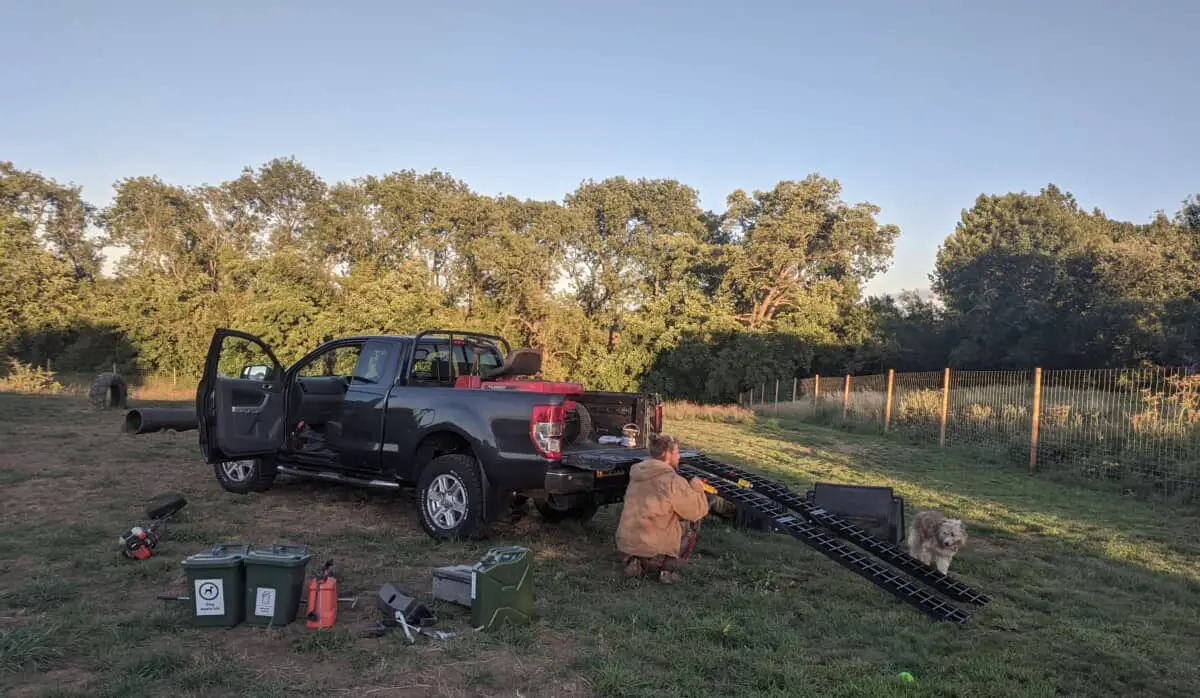
What is the difference Between M+S and the 3PMSF Tyres?
‘Mud and Snow’ (either marked as M+S, M.S or M&S) has been used to indicate winter tyres for many years but it is not associated with any mandatory performance test, there is no performance guarantee associated with ‘M+S’ marked tyres and they’re being phased out across the industry.
However, since November 2012, UNECE Regulation 117, has been implemented in the EU through Regulation (EC) 661/2009.
It requires that for tyres to be used in winter conditions, a minimum level of performance on snow (braking and traction) needs to be achieved. If the tyre meets the criteria of an ad hoc performance test (which is conducted in an accredited laboratory), it can be marked with the three-peak mountain snowflake (3PMSF) symbol is an additional but not mandatory marking.
The “M+S” marking remains as an allowed marking but does not indicate any minimum threshold in winter conditions.
What you are looking for is the 3PMSF marking
Anyone who has read our scathing article discrediting the ‘thermal grade’ testing of motorhomes and caravans will know that we’re very sceptical about so-called grading and performance marks in general but in this instance, and with a 15 year career working alongside tyre manufacturers from all over the world, I am confident that these tests are credible!
So whether you choose a pure winter tyre or an all-season tyre, the 3PMSF mark is what you’re looking for.

Don’t You Only Need Winter Tyres in Countries that have Proper Winters?
This is a very common misconception and you’d be forgiven for thinking that we don’t have a need for winter tyres in the UK – that isn’t true as you’ll see and you may find that after reading this article, like us, you might opt to have winter tyres on your vehicle all year round.
This confusion is the tyre manufacturers fault entirely – every advertisement you will see for winter tyres features a snowy scene, a frozen lake, a treacherous mountain pass or some Game of Thrones North Wall-esque landscape.
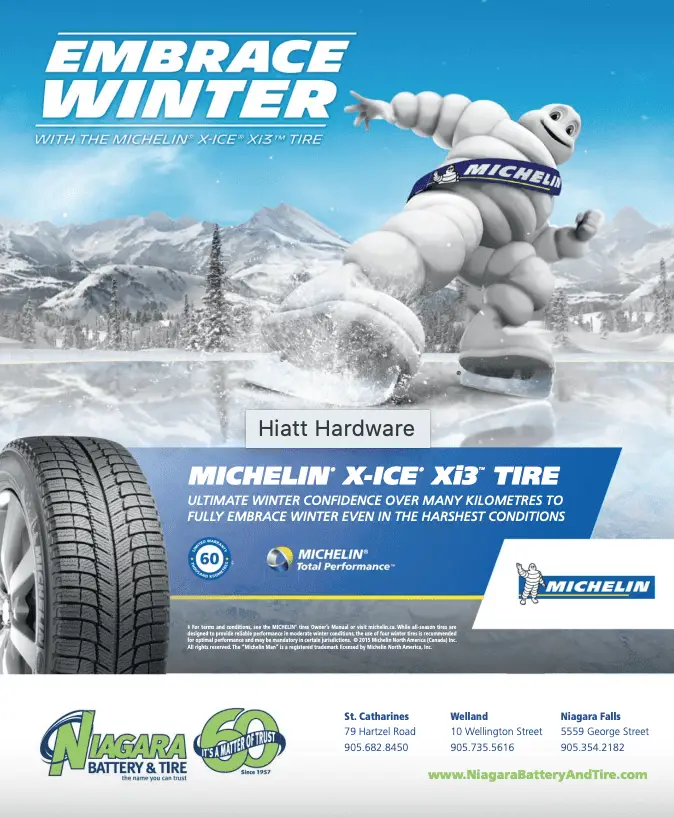
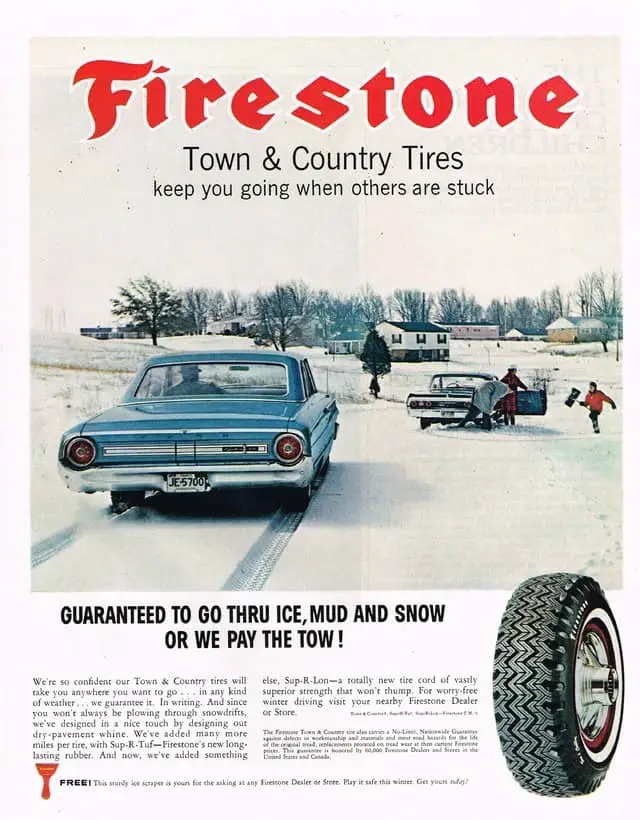
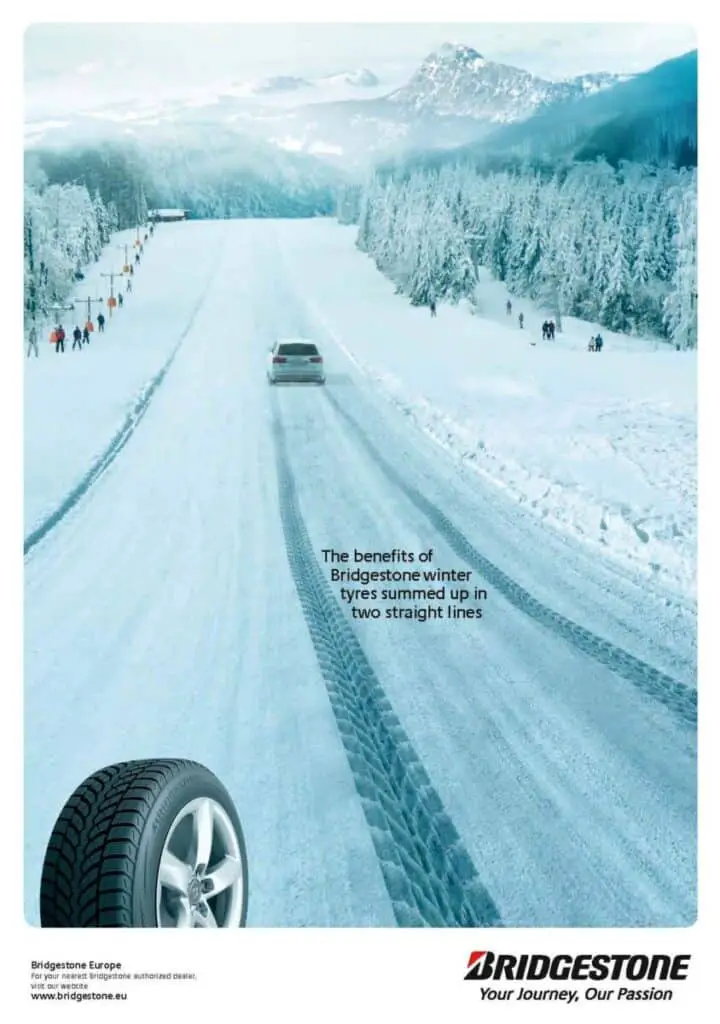
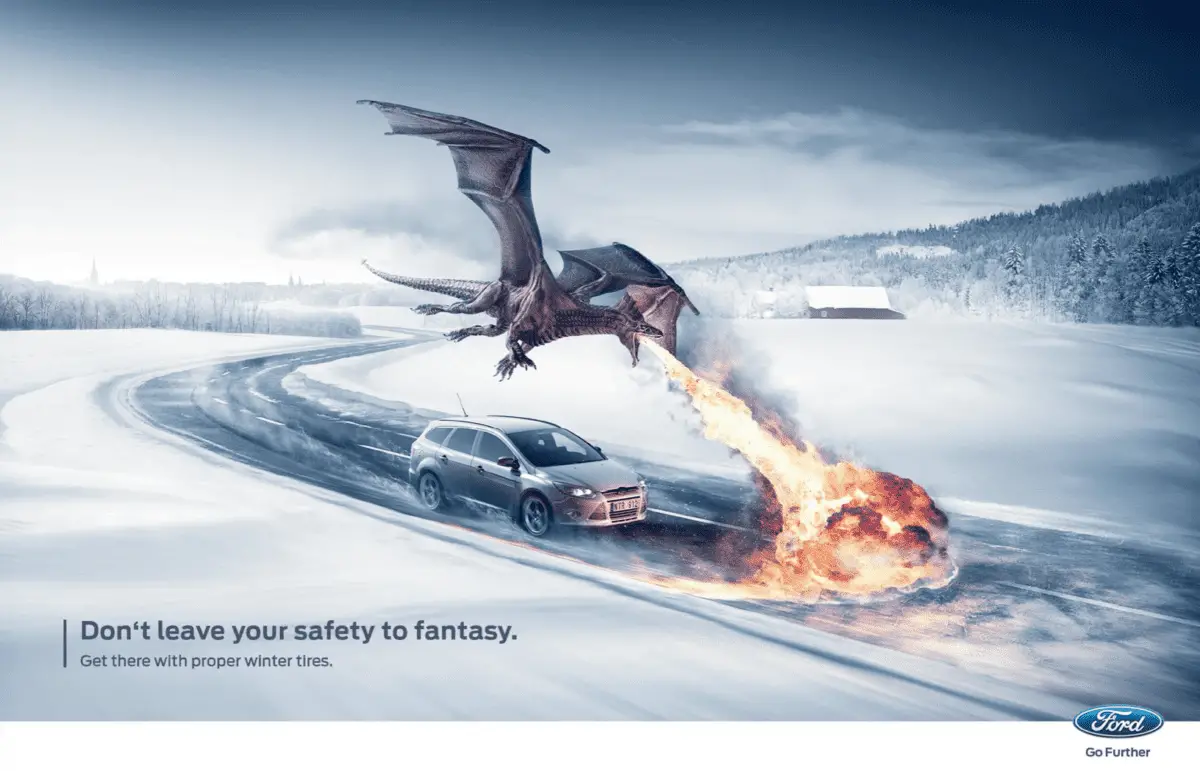
Picture the scene: a soggy but crisp November day in Milton Keynes – a family people carrier sprays muddy water in slow-motion as it careers around a roundabout in the infamous concrete jungle – it’s a bit twitchy and just missed curbing an alloy and sliding sideways into a stationary car waiting to enter the roundabout.
This image doesn’t really sell the majestic image of winter, where only the well prepared will survive does it? However, Mummy Jo, Daddy Bob, little Louis and Gemma didn’t like that unscheduled, momentarily drift experience AT ALL.
THIS IS WINTER DRIVING.
The point here is important – where the road temperature falls below 7oC, a winter tyre outstrips a summer tyre by a country mile so think about your daily driving in winter. For most people who drive to work (even those on night shift), the times they are getting into a car on cold tyres is early morning and after the sun has set. When temperatures are commonly below 7oC.
What we’re trying to say is that your trip to the Alps isn’t the only ‘winter driving’ you do and these tyres are perfectly suited for our sort-of chilly winters here in the UK – and as you’ll see, they’re an economical choice all year.
Rebranding to Cold Weather Tyres
80 years down the line, it’s a bit late for a rebranding exercise but our industry insider firmly believes that in the UK, we’d see a significant increase in the the uptake of winter tyres and far fewer objections to them, if they were rebranded as cold weather tyres.
There are few objections to compulsory winter tyres across continental Europe and the manufacturers send out very different marketing messages there, where the education of the features and benefits of winter tyres are well known to drivers.
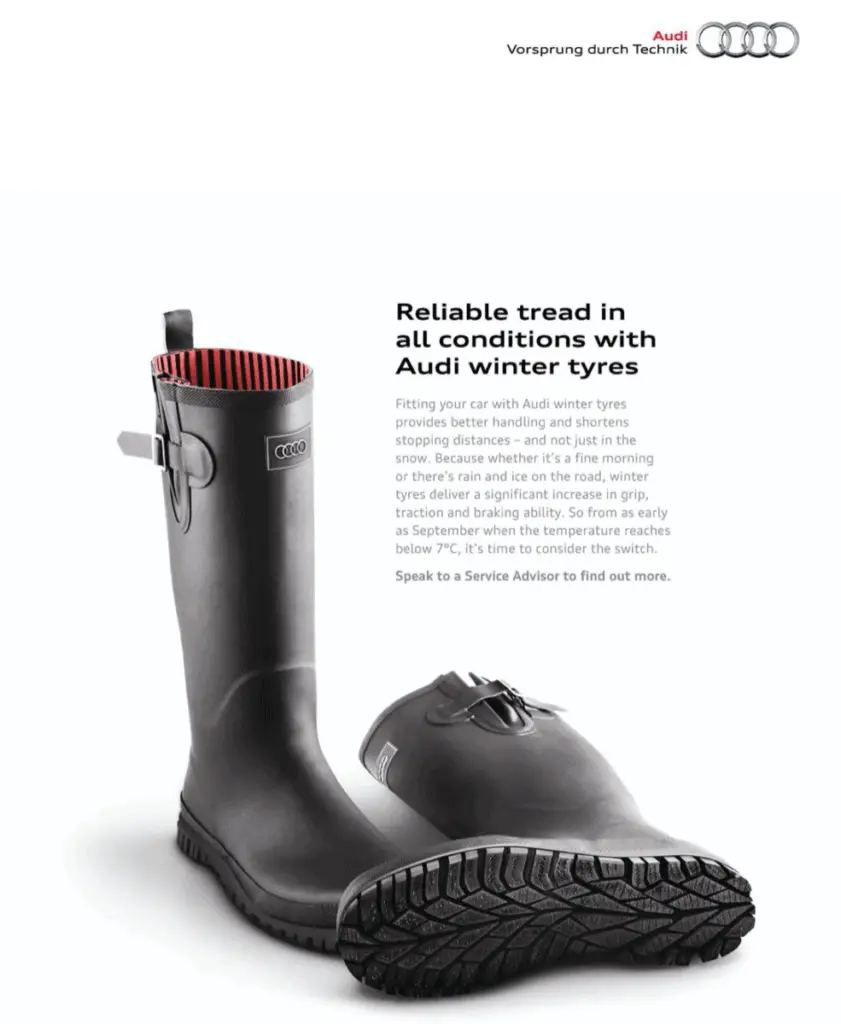
Winter tyres perform better than summer tyres in conditions below 7oC
Are Winter Tyres Only Designed for Snow and Ice?
Winter tyres are optimised for cold weather conditions (not just snow and ice) but that doesn’t mean that they don’t work, or that they have dangerously reduced performance in warmer conditions.
You’ll see in the infographic below from Continental that a reduced performance in summer conditions is seen in winter tyres. However, after digging deeper into this topic we have concluded the following, in-line with the view of several experts:
- It is inevitable that under stress testing, there will be a reduction in warm weather performance
- The tyre will degrade marginally faster than the tyre designed specifically to work optimally in these conditions
However:
- For the average road user who is observing road conditions, speed limits and stopping distances, none of the above will be an issue.
- You are unlikely to notice any real difference unless you have a very refined understanding of vehicle dynamics or are driving in very unusual conditions.
This is especially true of motorhome and campervan users who generally travel more cautiously for economy and safety reasons. If your everyday car rarely leaves Yorkshire and takes an annual vacation to the Alps, all year round, winter tyres will still offer you the greatest flexibility and performance overall. If you live in a significantly drier micro-climate (London is an example of this), an all-season tyre may serve you better and will STILL be a better option than a summer tyre if you are looking for a one-tyre-all-seasons solution.
Another exception to this would be those of you intending to travel both in alpine conditions in the winter and hot-footing it around southern Spain or Morocco in the summer for example, where roads can reach egg-frying temperatures. Many of you in this bracket will likely have already been converted to the All-Season clan.
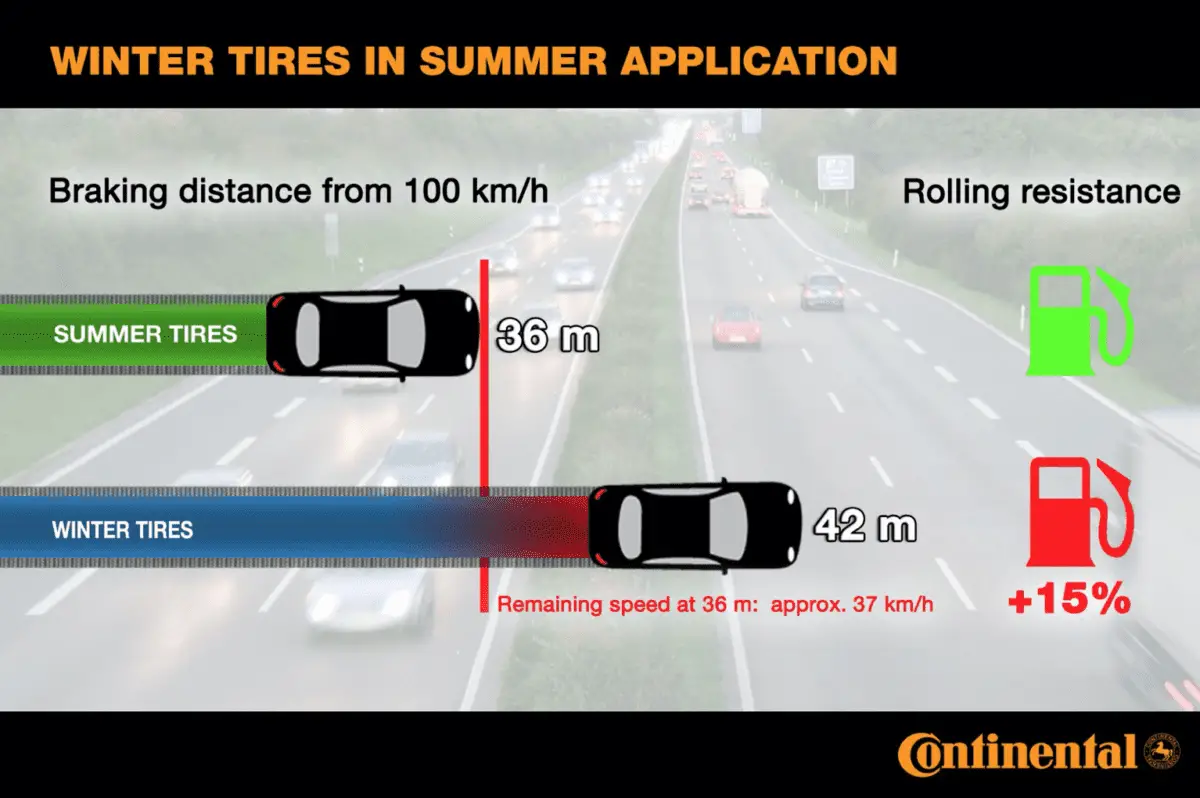
Are Winter Tyres Expensive?
Winter tyres are on average 10-15% more expensive than their summer counterparts of the same brand in the same range. However, if you choose to have them as your full-time tyre and you’re living in most parts of the UK, then you can achieve up to 50% additional mileage in the tyre lifecycle. This demonstrates that whilst they are more expensive to buy, they offer a long-term cost saving.
The extra cost of a winter tyre isn’t an imaginary premium dreamed up by the marketing department either. As winter folks, you’ll know that ‘Winterising’ any product, whether that’s a walking boot, a motorhome or a top-notch ski jacket, tends to be a more costly process than the summer-focused alternative.
As you can see, you pay more for longevity and the versatility winter tyres offer.
If you’re curious about the options open to you, use the tyre search below – you can filter by season, load rating etc.
What’s the Difference Between Premium and Budget Winter Tyres?
The difference between premium, mid-range and budget winter tyres is largely to do with development.
You may think that it’s all to do with quality of materials or performance but it’s actually a lot about ‘last season’ – or the season before… or 10 years ago.
Tyre development is extraordinarily technical and costly. Tyre manufacturers are renowned for their secrecy and it is said that it’s easier to get into The White House than it is to cross the threshold of the R&D departments at Michelin.
In general, a budget tyre is one that is several years old in terms of development – perhaps top of its class 10 years ago, they are often rebranded under the same mother company and sold as a low-cost alternative to the more expensive, and later models. A mid-range tyre, like the budget tyre is still functional and offers the guarantees provided by the 3PMSF testing but lacks the very latest development of the premium tyre – perhaps a few years behind the times.
The premium tyre – the mutts nuts – is the best the brand has to offer – the very latest in technological development, taking account of manufacturing and design changes to cars and vans, motorhomes and campervans. They also account for changes in our consumer demands – a quieter ride for example being one – and it is this market force that’s led to the keen interest tyre manufacturers have taken in producing an all-season tyre.
Most of the big tyre manufacturers have a budget and mid-range tyre brand in their portfolio. It allows them to utilise their older designs without competing internally or diluting their premium offering with a ‘sub-par’ product.
One thing is universally agreed – a credible budget winter tyre is more likely to out-perform a good summer tyre in cold conditions but if you’re looking for all year boots for your vehicle, this video might convince you to upgrade to a mid-range or premium tyre for overall economy and versatility.
If you’re going to go down the route of a winter set that you will fit just for your annual trip or two and you’re not planning to mountain-hop during your trip, a budget tyre with the 3PMSF marking will be good enough. Having used a top end budget tyre for a full season – we couldn’t have been happier with the performance of the Falken Van01 EuroWinter tyre.
Do I need to Put Winter Tyres on All My Wheels?
Yes – there was a really weird rumour – and goodness only knows which plonker started it – that you only need to have winter tyres on drive wheels.
Poppycock. In fact, so bamboozled by the fact that this rumour was gaining some momentum were the Germans, that they’ve gone so far as to mandate that all wheels have to have winter tyres where any are fitted – just incase some plonker thinks it’s ok to stick them only on your drive wheels.
Winter tyres are a different compound, structure and behave differently to summer tyres. If you want to find out what happens when you mess about with different tyres front and rear, go on a drift experience. Or better still go to an ice rink wearing one flip-flop and one snow boot and see how you get on trying to cross from one side to the other. Or watch Jonathan demonstrate this perfectly below.
Are Winter Tyres Noisy and Uncomfortable for Passengers?
This is where people often get confused between ‘all-terrain’ tyres and modern winter tyres. Modern winter tyres are designed with all the same things in mind as summer tyres – comfort, durability, road noise and performance. You will find that the more expensive brands will usually offer a quieter ride and that’s because this comes at a development and production cost. You will be able to see the dB rating when you purchase a tyre and this will depend on the overall size of your tyre as well as the brand. With huge investment having been made in ‘noise-cancelling’ tyres in the performance sector particularly, we are likely to see these ratings get quieter and quieter.
Opting for a premium winter or all-season tyre with this ‘noise-cancelling’ technology will make the long, sometimes overnight, drives to the Alps significantly less exhausting for everyone in the vehicle!
Remember, the comfort of your ride will further be optimised by having the correct tyre pressures and importantly for motorhome and campervan drivers, how you load your vehicle for travel. Remember that the right distribution of load for your vehicle, front to back and side to side, can have a significant impact on your comfort and safety.
Do Winter Tyres Degrade Faster in Summer?
This is a topic that deals with safety and economy. Winter tyres do degrade faster than summer tyres in warmer conditions but – here’s the interesting bit:
Summer tyres degrade far faster in cold conditions than winter tyres degrade in warm conditions
So, if cost is your objection to fitting winter specification tyres, you only need to run one set of tyres all season and you can go with either winter or all-season tyres depending on your circumstances.
In data shared with us, during the tyre lifecycle of a variety of cars tested in the UK, including a sporty hatchback, a family estate and a performance super car, we can see a 50% mileage (or life) increase, clear as day.
Tyre Tread Depth and The Law
An interesting point (which seems so obvious once you know) is that winter tyres come with a significantly deeper tread to start with – around 9.5mm compared to 7mm on a summer tyre.
The legal tread depth for a winter tyre in winter conditions is 4mm in most countries where their use is mandatory in winter. Summer tread legal limit in the UK is 1.6mm but once a winter tyre wears below 4mm, it just becomes subject to the summer tyre 1.6mm limit. Of course, it then doesn’t offer the same benefits as it did as a pure winter tyre but its wet weather performance will still be better than it’s summer counterpart at the same tread depth due to its surface design and will work better in cold conditions in general due to the compound and construction.
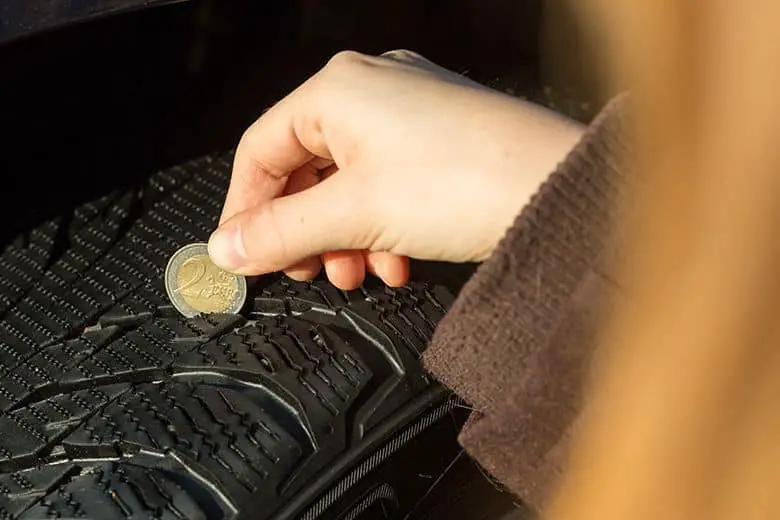
Note: Despite the legal limit on tyre tread being 1.6mm in the UK, it is widely agreed within the tyre industry that tyres should be changed at 3mm, not 1.6mm and this isn’t marketing, it’s to do with performance drop-off and is science.
How Long Do Winter Tyres Last?
As with most questions relating to tyres the answer to “how long do winter tyres last?” is dependent on a number of variables, however, here are a few approximations:
- Spare set of wheels that you use once a year for a ski trip – you can expect to get about 7 ski trips out of them and after 7 years, and 51 weeks per year in storage, you’ll be looking for a new set.
- Everyday use with a few annual trips to the Alps – this will depend on your mileage, your location and your vehicle amongst other things but in a largely temperate climate like the UK, you can expect to see up to 50% more mileage out of a winter tyre than a summer equivalent
- A set of winter tyres that you fit October to March with a couple of snow trips thrown in and then switch for summer tyres when the weather changes – again variable but you are likely to get 3 or 4 years from them depending on your winter mileage
- Seasonnaires – After a full season in a 3.5 tonne motorhome, followed by two months in conditions over 7 degrees and thousands of miles covered, we registered approximately 1mm wear on our Falken Van01s. If you are spending the entire winter in the mountains, even if you are heading south for the summer straight after, we highly recommend a true winter tyre. There are tyre hotels all over the continent and if you can stomach the ride from Calais to say Grenoble or Lyon with a full set of summer tyres on board, then you will find a garage that will store them for you until the snow has melted.
Can I Swap My Tyres onto the Same Rims?
It is not advised to switch tyres between rims – they are not designed to do this. Every time you remove a tyre from a rim and re-seat it, you are stretching and distorting the tyre.
There are people who will tell you it’s fine – there are even tyre fitters who will tell you it’s perfectly safe and will do it for you. However, if you are in a crash and your tyres are sent for inspection by your insurance company and they find that they have been re-seated, this may have a significant impact on their report and subsequent pay out.
There are test centres all over the world that specifically deal with tyre investigations. They are highly skilled, independent auditors whose job is to discover if a tyre is faulty – it is extremely rare that a tyre is found to have a manufacturing defect in these investigations and the vast majority of outcomes show that it is user error that has caused or resulted in a tyre failure. This includes poor storage conditions, parking with the tyre on a curb, curbing a tyre, prolonged exposure to high UV levels and most common – fitting failure of some sort.
Get a spare set of rims. A weatherproof set of steel wheels will set you back £200 and you won’t need to worry about curbing your fancy diamond-cut alloys on rocks hidden under snow.
How Should I Store My Winter Tyres?
You may have heard of a Tyre Hotel – these vary like regular hotels from the 5* facilities that provide air conditioned, circulated, moisture-controlled cabins to being dumped in the corner of your local fitters garage. If you don’t have space at home, these are a great option but you get what you pay for and you can find perfectly good storage with some of the big fitting garages for between £6 and £15 per tyre, per season.
Tyre Storage at Home
- If you are storing on rims, tyres should be stacked on top of one another, if they are naked they should be stored side by side – article on storage to follow!
- In a cool, dry environment like a garage or weatherproof outbuilding
- Covered properly from exposure to sunlight
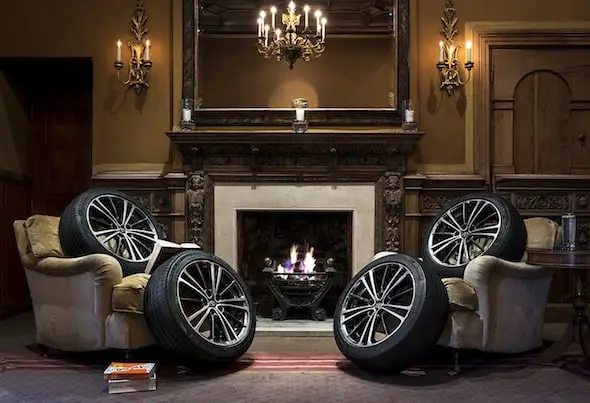
Where Can I get Winter Tyres?
Whether you prefer to go to a fitter and take advice or buy online having done your own research, winter tyres are widely available from September to March. Out of season you will find less choice but you will still be able to find a tyre for you.
One thing we can testify to first hand is that most tyre fitters in the UK are very inexperienced when it comes to winter tyres and we found very few that have significant knowledge – particularly when it comes to winter tyres for motorhomes or campervans.
There is however a wealth of information available on the internet and we can highly recommend tyrereviews.com for up to date information.
Once you’ve created a shortlist, you can use a number of online suppliers to do your own price comparison, order direct and either choose to use your own local fitter or opt to have the tyres sent directly to an appointed partner.
Winterised Tip for Buying Winter Tyres:
If you have the space to store your winter tyres, you can buy them when they’re on special offer and simply have them fitted when you need them. They are often discounted in early spring and you can grab a bargain.
Online Tyre Stores with Good Winter Tyre Variety and Current Offers:
Do I need a Winter Tyre on My Spare?
Maybe yes, maybe no.
If you have a standard wheel on board and you intend to convert to full-time winter tyre use then it makes sense for that wheel to have a winter tyre.
If you are carrying a space saver tyre, you will need to exercise extra caution if you have to use it – we have not been able to find a winter space saver here in the UK (please let us know if you know where they are available!) so a skinny summer version is all that you may find you have.
Stopping distances will be significantly increased and handling will go to hell so if you need to navigate 21 bends to reach a garage on your space saver, you want to be super cautious.
If you do have to change a tyre on a drive wheel and you’re facing a snowy or icy drive to the garage, it’s worth considering changing your wheels around so that your drive wheels both have a winter spec tyre on.
If you have a big rig or a Unimog and are running on truck tyres, we strongly advise consulting with specialists!
Why Can’t I find a Tyre That Fits My Vehicle?
There could be a number of reasons for this and the first place to start is when you’re buying. Tyres are a seasonal product and because they have theoretical expiration dates, are produced to requirement. In the Northern hemisphere, our requirement for winter tyres begins in September and this is when all manufacturers bring their latest products to market – it’s also when you’ll find the greatest selection and availability in sizes.
There aren’t many motorhome specific winter tyres available and over the years Michelin and their competitors have done a great job of developing ‘campervan specific’ tyres which have different load ratings and construction in the wall. We are assured that whilst these are a nice to have, they do not offer the performance advantage that their premium might suggest, and that a van tyre is perfectly adequate in most circumstances.
You will find a vast array of winter tyres available for commercial vehicles and in a very competitive market they are well priced.
Do I Need Winter Tyres in Scotland?
You are not legally required to fit winter tyres specification in Scotland during winter but if like us, you are planning a winter ski trip to the highlands, it’s highly recommended that you switch to winter tyres.
Unlike the Alps, the mountain roads in Scotland aren’t cleared as regularly on the approach to the ski centres and parking areas at trailheads. These roads are often narrowed by snowfall and the road limits are not marked as clearly as you see in the Alps. It is not uncommon for a vehicle shod with summer tyres to create a hell of a hoo-ha by getting stuck on a mountain road, holding up traffic and sometimes requiring disruptive recovery.
Anyone who has visited Scotland in the depths of winter will also know that weather can come in fast and you may return to your vehicle following a day on the mountain to discover that within ten minutes, a snow storm has engulfed the car park and exit routes with treacherous dry white dust that can make driving very sketchy indeed.
So, do your fellow snow-seekers a favour and make sure that you are on winter or all season tyres this season – Scotland has enough to deal with maintaining it’s snow sports industry without having poorly equipped vehicles blocking main roads and routes to snow sports spots.
What You Need to Know About Snow Chains and Socks
This isn’t an article about snow chains and socks but they are directly linked and these contraptions are another very good reason to invest in 3PMSF tyres. WHAT A FAFF. Whilst you can see from the table, there are places you need to carry chains, in our experience, with a good winter tyre, the occasions when you might actually them are rare.
Why is this so important? TIME. If you’ve gone out of your way to travel through the night to reach resort by first lift, the last thing you want to do is find yourself on the side of the road, messing about with some rage-inducing, aftermarket so-called safety device that isn’t getting you on the slopes any faster.
Snow-Socks
It is still mandatory to carry chains in many countries. At present, socks are not a legal substitute for snow chains anywhere in Europe although regionally, some authorities do accept them. There are people who will tell you that socks are awesome and that you don’t need winter tyres if you have socks. They are misinformed. If this was they case, then rather than invest billions every year in improving winter tyres, the tyre industry would say
“screw this for a game of tiddly-winks, let’s just shove some of those lederhosen on the summer ones and everything will be grand”.
They don’t say that.
Snow socks do have their place but it really depends on how much you want to carry. If you’re going to most ski areas in Europe, it is mandatory to carry chains anyway (you can be stopped for a check and this has happened to us) and if you have winter tyres, you aren’t likely to need snow socks as well.
There are some developments in snow sock technology taking place but whether they really catch on when winter tyres are so good at their job remains to be seen. But THEY ARE NOT A SUBSTITUTE FOR WINTER OR ALL-SEASON TYRES IN THE SNOW.
If you want to see why we feel more effort needs to be made to educate drivers about driving in winter conditions, take a look at this piece of terrible, poorly presented and incomplete journalism from a trusted name in consumer ‘testing’, Which?
Snow Chains
Chains are an antiquated technology and they’re a pain in the bum. If you’ve tried to fit them in a blizzard, half way up a mountain with Gendarme breathing down your neck like you’re on the Crystal Maze, you will wish you’d put in F1 Pitstop commitment to training to put them on and off.
Socks are far easier to fit (sometimes) and serve a purpose, albeit limited, but if you have good winter tyres, and you need some extra oomph, you’re going to need more than some kevlar pantyhose to get you out of trouble.
There are a couple of things about chains you should know.
- Tyre companies don’t really consider chain use when developing their tyres
- Chain companies try to design a retro-fit product that we all hate, we resent paying for and make everyone who comes into contact with them mad or cry
- Chains are really quite dangerous – anyone who’s failed to fit them properly (easily done) and had them fly-off under considerable tension will testify just how terrifying this can be
- Chains are treacherous as soon as the road is clear of snow and ice and must be removed immediately – awkward if the road is patchy snow and ice for miles.
So when you hear someone say that socks are the new chains, you can politely inform them that actually, winter tyres are the new chains and socks are the handbag-umbrella of the winter wheel world. They’re a handy alternative that’s less cumbersome than a golf umbrella but does half the job.
Both chains and socks need to be removed the minute you’re off snow and ice and this is entirely impractical – anyone who’s driving mountain roads in winter can tell you that drifting snow, patchy ice, and fast changing weather make this a huge pain in the bum.
Considering what we are actually doing is actively chasing fresh snow, making that challenging by not having appropriate tyres seems counterproductive!
Have you ever thought about what would happen if you were in a crash in the mountains?
You’ll see from our table at the very beginning that in some European countries, rather than mandating the use of a specific tyre in winter, they stipulate that your car has to have suitable winter gear fitted.
This is quite subjective – until you come to argue the toss with your insurance company and that actually presents some interesting points because theoretically, your car should be only be driven in a ‘suitable environment and in safe conditions’.
This is why you might find a no-track use clause in your policy wording – and exactly why you regularly see a Porsche 911 being pushed on the main road outside Silverstone so it can be recovered. Goodness knows how it’s gearbox failed so spectacularly just outside the gates to a world renowned Grand Prix Circuit.
I guess what we’re trying to reiterate here is that if you’re driving to the mountains, with the express intent of finding snow when you arrive, then you ought to dress appropriately, and that includes shoeing your vehicle for the conditions.
A Few Tips on Maintenance and Safety with Winter Tyres
As with any road trip, you should do a safety check before you go and before you come back but there are also a bunch of things you might find useful to make sure your tyres are in tip top condition, particularly when heading to the mountains in winter.
- Check your tyre pressures – also make sure you do this if you’ve had to let some air out to get out of a fix (snow drift, icy bog….motorhome owners will know all about this)
- If you’re swapping onto different wheels that are different sizes from your summer wheels, you should get a full wheel alignment service before you go
- Rotate your winter tyres every 5,000 miles – this is the best way to manage uneven wear in your drive wheels
- Clean your wheels before you go and when you get back – they are going to get very mucky in resort and covered in a lot of salt and road chemicals
- Make sure your values are clean and free from debris – use a bit of de-icer if the pin gets iced up
- Move regularly – this applies to all vehicles but particularly those parked outside in resorts for long periods. The freezing and thawing that occurs under foot over time can cause your tyres to flat-spot or become misshapen. If you are in a campervan on chocks, this is even more important as the freezing and thawing can cause your vehicle to become unbalanced. Where you have an uneven load in your motorhome when you are parked up, your tyres will experience uneven pressure – it’s good to move regularly for all the moving parts on your vehicle, but getting a heat cycle through your tyres is particularly beneficial every now and then.
- Protect the Tyre – if you are planning on staying all season and your vehicle is in direct sunlight, UV protectors are a good buy. They’re easy to fit and just provide a layer of protection from the highly degrading rays of the sun.
Conclusion: Being Ever-Ready to Shred
Life is a little fly by the seat of your pants at the moment. With snow-sure resorts, school holidays set in stone, and free and easy travel being a thing of the past, being able to respond to changing circumstances is going to stand you in good stead this coming season.
When we first set out to tour the Alps in a motorhome, the lure of being a snow-chasing rolling stone was the driving force. For motorhome and caravan skiers this is ‘situation normal’ – watching the weather, moving from mountain to mountain – and being able to head back home whenever you need to, without relying on a tour operator or public transport.
That kind of flexibility isn’t just the privilege of people with campervans. Since we discovered the enormous benefits of self-drive ski holidays we haven’t looked back – from making a base in the Pyrenees and using our car to visit resorts, to road tripping from Milan to Maidenhead, booking Air BnBs and checking into hotels on arrival – we’ve had total freedom and have skied more mountains in one fortnight trip than many people ski in a lifetime.
This is made significantly easier if you’re prepped and ready-to-go when everything falls into place, and that includes having winter tyres fitted.
Imagine – there’s just been an almighty dump in Kitzbuhuel overnight and you can get there for first lift!
If you’re a self-drive skier and you’re considering becoming a Snomad, or a campervan, caravan or motorhome owner looking for more places to stay, up to date information to help you plan your trip and help and advice from experienced snow-chasers, why not join the Winterised Tribe? Winterised Tribe is an ‘off-facebook’ social community that’s geared towards helping one another and sharing really good information in a completely different online environment. You can find out more about the Winterised Tribe and how to join us here.


